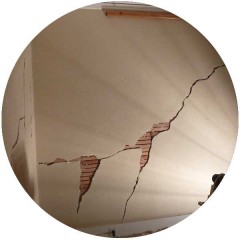We have an established history in the survey and remediation of corrosion damaged structures, and creation of life extension remedial measures and new designs for structural longevity. Collaboration of our in-house scientific and engineering services deliver maximum efficiencies to our clients.
We offer environmental analysis including water, air and soil assessment and monitoring; emissions surveying; soil testing and contamination assessments; investigation into causes of concrete deterioration; high level analysis of large and small-scale building dilapidation and provision of scope of works for extensive remediation and renovation.
We have investigated and reported on building-wide leaks, concrete cracking, ill performing structural and civil projects, construction induced damage, materials issues and failures of paint and finishes. We have identified deterioration mechanisms ranging from industrial corrosion caused by sulphuric acid condensation; metal failure in vehicular trailers and sifters; damage from piling and seismic shocks; long-term carbonation and chloride ion penetration and the actions of microbial organisms.

Materials Science investigations available include :
- Petrographic investigations (seen above) for determining concrete deterioration modes including fire damage, paste conditions, ASR gel formation and Delayed Ettringite Formation (DEF) to enable appropriate building remediation strategies (as per ASTM C856)
- Core survey investigations and concrete strength assessments as per AS 1012.14
- Durability assessments for chloride exposed concrete, such as in major private and public aquatic facilities and marine environments (chloride and cement content assessment as per BS 1881:124)
- Roof core surveys for durability on major skyscraper and multi-storey concrete structures (including carbonation testing as per WA 620.1)
- Roof inspections following major weather events
- Waterproofing, dampness and mould investigations of buildings including heritage listed structures
- Concrete relative humidity investigations including non-invasive dampness surveys through to in-situ probe testing as per AS 1884-2012 coupled with advanced mathematical modelling on concrete drying times.
- Asbestos on-site sampling and identification as per AS 4964
- Dilapidation surveys and structural defect identification
- Rope and drone surveys of large-scale structures
- Chemical investigations of plasters and render materials
- Investigation of accelerated ultraviolet decay of vinyl sheeting
- Unknown materials identification using X-ray diffraction analysis services, mass spectrometry (GC-MS), trace element analysis (ICP-AES), and electron microscopy
- Invasive videoscope wire-tie investigations of brickwork
- Concrete and materials science research and development services
Please note that as many of our projects in this field are of a sensitive nature, please contact us direct to discuss your requirements.





